I would like to look at the compound feature importance of the principal components with DALEX model_parts but I am also interested to what extent the results are driven by variation in a specific variable in this principal component. I can look at individual feature influence very neatly when using model_profile but in that case, I cannot investigate the feature importance of the PCA variables. Is it possible to get the best of both world and look at the compound feature importance of a principal component while using model_profile partial dependence plots of individual factors as shown below?
Data:
library(tidymodels)
library(parsnip)
library(DALEXtra)
set.seed(1)
x1 <- rbinom(1000, 5, .1)
x2 <- rbinom(1000, 5, .4)
x3 <- rbinom(1000, 5, .9)
x4 <- rbinom(1000, 5, .6)
# id <- c(1:1000)
y <- as.factor(rbinom(1000, 5, .5))
df <- tibble(y, x1, x2, x3, x4, id)
df[, c("x1", "x2", "x3", "x4", "id")] <- sapply(df[, c("x1", "x2", "x3", "x4", "id")], as.numeric)
Model
# create training and test set
set.seed(20)
split_dat <- initial_split(df, prop = 0.8)
train <- training(split_dat)
test <- testing(split_dat)
# use cross-validation
kfolds <- vfold_cv(df)
# recipe
rec_pca <- recipe(y ~ ., data = train) %>%
update_role(id, new_role = "id variable") %>%
step_center(all_predictors()) %>%
step_scale(all_predictors()) %>%
step_pca(x1, x2, x3, threshold = 0.9, num_comp = turn_off_pca)
# parsnip engine
boost_model <- boost_tree() %>%
set_mode("classification") %>%
set_engine("xgboost")
# create wf
boosted_wf <-
workflow() %>%
add_model(boost_model) %>%
add_recipe(rec_pca)
final_boosted <- generics::fit(boosted_wf, df)
# create an explanation object
explainer_xgb <- DALEXtra::explain_tidymodels(final_boosted,
data = df[,-1],
y = df$y)
# feature importance
model_parts(explainer_xgb) %>% plot()
This gives me the following plot although even if I have reduced x1, x2 and x3 into one component in step_pca above.
I know I could reduce dimensions manually and bind it to the df like so and then look at the feature importance.
rec_pca_2 <- df %>%
select(x1, x2, x3) %>%
recipe() %>%
step_pca(all_numeric(), num_comp = 1)
df <- bind_cols(df, prep(rec_pca_2) %>% juice())
df
> df
# A tibble: 1,000 × 6
y x1 x2 x3 x4 PC1
<fct> <int> <int> <int> <int> <dbl>
1 2 0 2 4 2 -4.45
2 3 0 3 3 3 -3.95
3 0 0 2 4 4 -4.45
4 2 1 4 5 3 -6.27
5 4 0 1 5 2 -4.94
6 2 1 0 5 1 -4.63
7 3 2 2 5 4 -5.56
8 3 1 2 5 3 -5.45
9 2 1 3 5 2 -5.86
10 2 0 2 5 1 -5.35
# … with 990 more rows
I could then estimate a model with PC1 as covariate. Yet, in that case, it would be difficult to interpret what the variation in PC1 substatial means when using model_profile since everything would be collapsed into one component.
model_profile(explainer_xgb) %>% plot()
Thus, my key question is: how can I look at the feature importance of components without compromising on the interpretability of the partial dependence plot?


